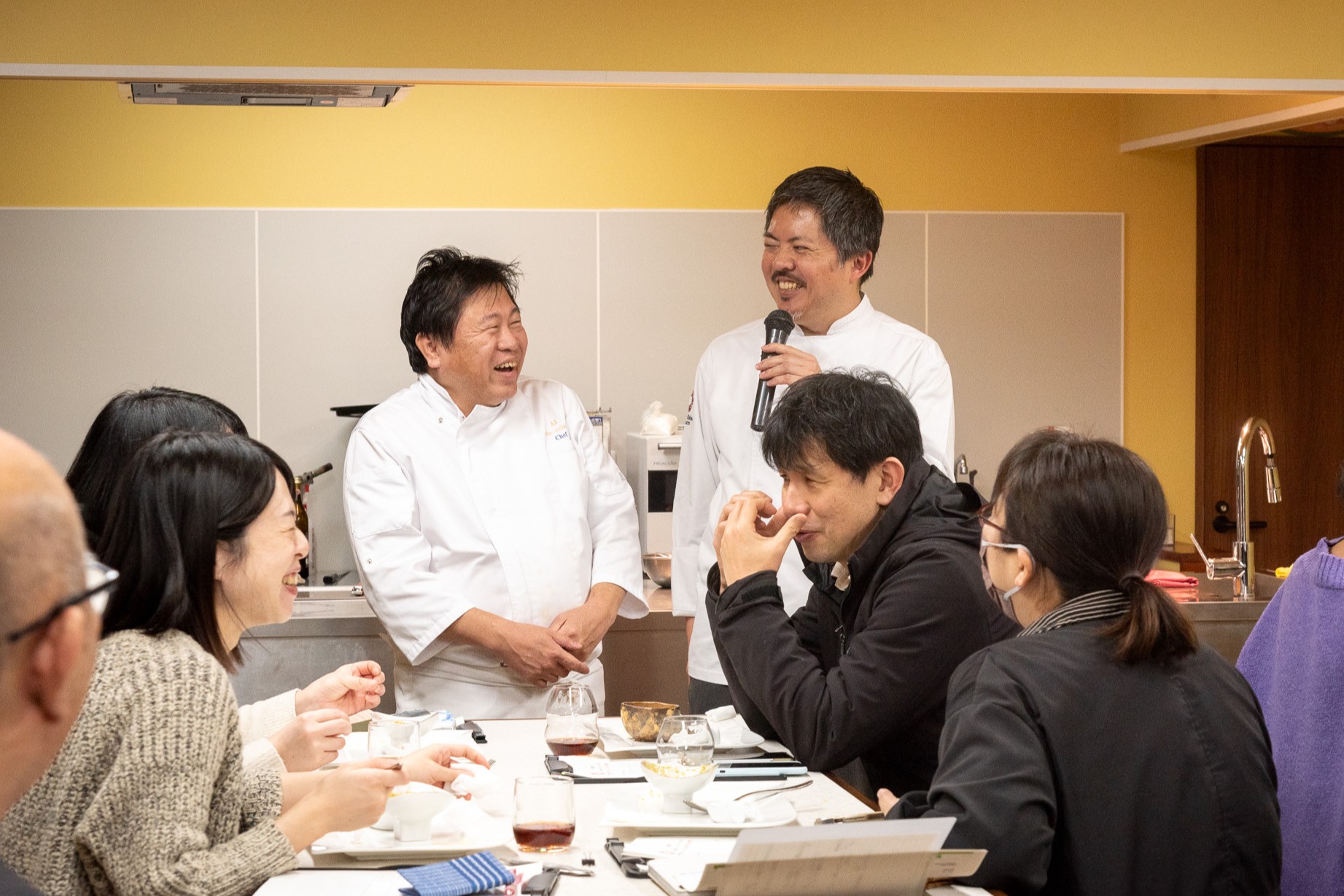
Report on the chef training program held on january 25, 2024.
“Achieving Food Diversity through Creativity and Ingenuity”
For the past decade, Tsuruoka City in Yamagata Prefecture, designated as a UNESCO Creative City of Gastronomy, has been advancing gastronomy tourism as a unified community effort. Recently, with an eye on inbound demand, they have been actively promoting food diversity and culinary variety. On November 13, 2023, they hosted the “Tsuruoka Gastronomy Summit,” where they explored the history and allure of Shojin cuisine, followed by a discussion on Tsuruoka’s culinary diversity and potential on the 14th. A major challenge that emerged during these discussions was how to acquire the necessary knowledge to realize food diversity. As one solution, a “Vegetarian Training Seminar” was held on January 25, 2024, at the Al Ché-cciano Academy.
The seminar was divided into two parts, with the first part featuring Masayuki Okuda, the owner chef of Al Ché-cciano, who had previously spoken at the summit and has long been a driving force behind the region’s gastronomy. The second part was led by Yasuhiro Higa, CEO of Maestranza, who is not only a chef but also engages in regional food production across Japan.
“The number of culinary options available is crucial”
The first part, titled “Okuda-style Vegetarian Gastronomy,” began with theoretical discussions. According to Chef Okuda, who has conducted independent research on Tsuruoka’s culinary potential for many years, Japan boasts the most diverse range of vegetables and fish species globally, with the country’s status as the final destination on the Silk Road cited as a significant factor contributing to the abundant variety of vegetables, particularly in Tsuruoka City. The city boasts 141 species of fishery products, along with a rich array of vegetables and fruits, including approximately 56 varieties of grapes and about 40 varieties of apples. This diversity is attributed to the region’s diverse terrain, ranging from plains to mountains, resulting in varied climates, as well as the cultural background of pilgrims bringing valuable “seeds,” such as vegetables and fruits, as offerings due to their monetary value in connection with the faith in the Dewa Sanzan mountains. This cultural tradition has helped preserve ancient vegetables and other produce for centuries.
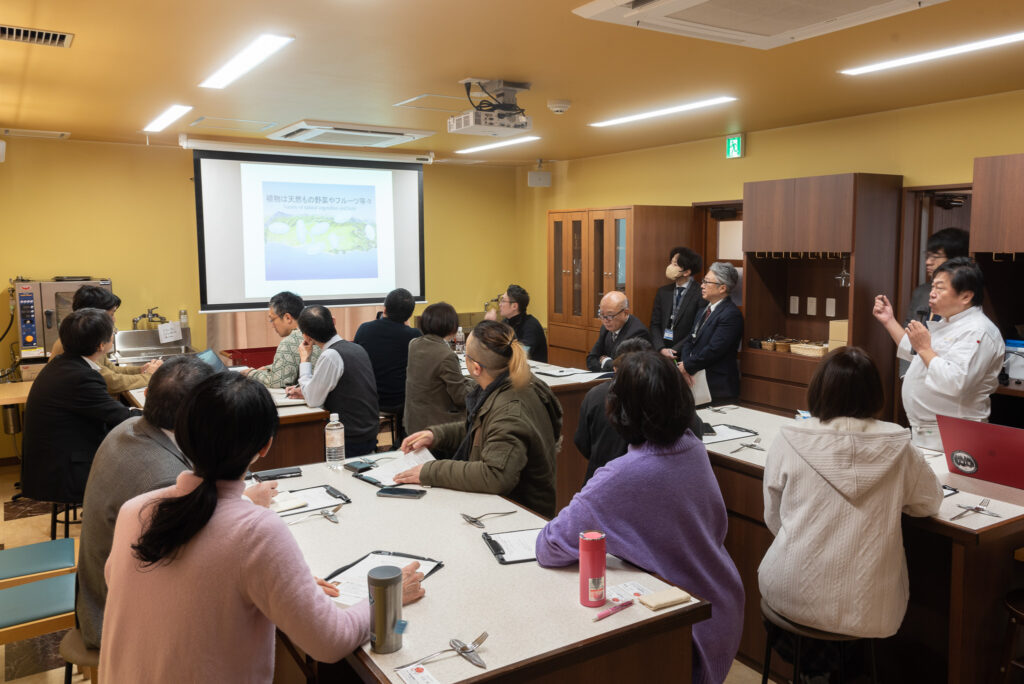
Due to the proximity of mountains and sea, the region has a history of incorporating seafood into mountain vegetable dishes, which has also influenced the deliciousness of Tsuruoka’s cuisine. For example, the presence of inosinic acid in ingredients like bonito flakes enhances umami flavors when combined with glutamic acid, resulting in a fivefold increase in umami. Based on this background, the Okuda-style vegetarian training focused on two dishes: “Pescatarian” dishes that combine vegetables with seafood, known as “Pescatarian,” and three vegan dishes, including one that won third place in the 2016 “The Vegetarian Chance” vegetable cooking contest in Milan, Italy.
(ベジピラミッド図)
The first dish created by Chef Okuda, which won third place globally, is similar to Ratatouille, featuring vegetables such as cucumbers, carrots, and myoga fermented with salt without heating. The difference from Ratatouille lies in the fact that, whereas the Mediterranean region has a dry climate resulting in strong bitterness in vegetables, which is neutralized with olive oil and heat, Tsuruoka’s vegetables are naturally sweet, eliminating the need for heating. This dish is titled “Tsuruoka Dashi Winter Version,” inspired by the local cuisine of “Yamagata’s dashi.”
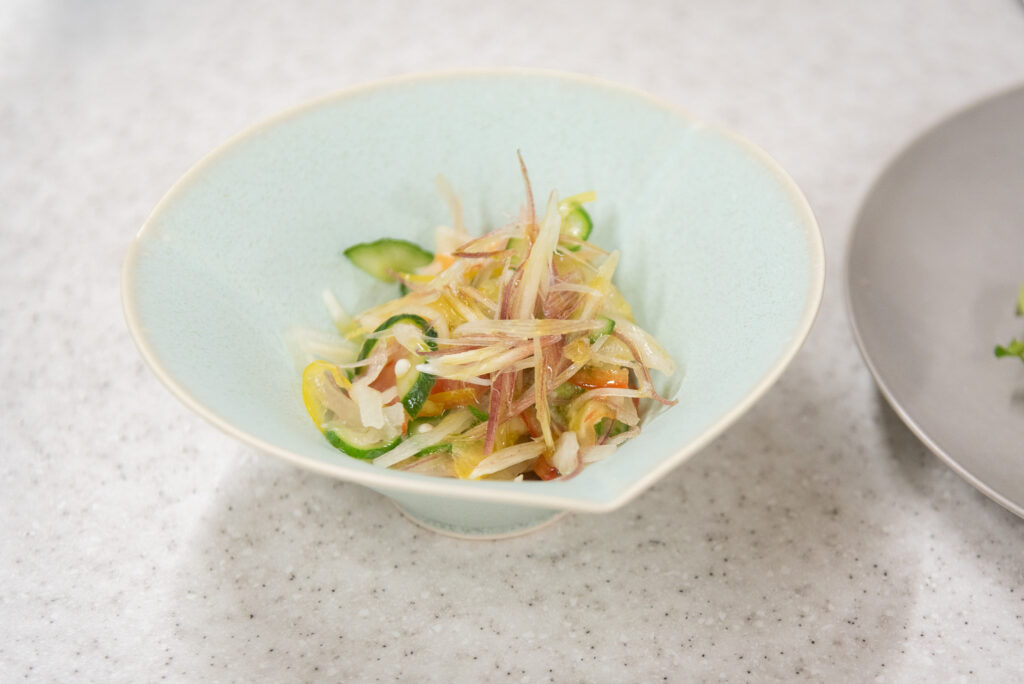
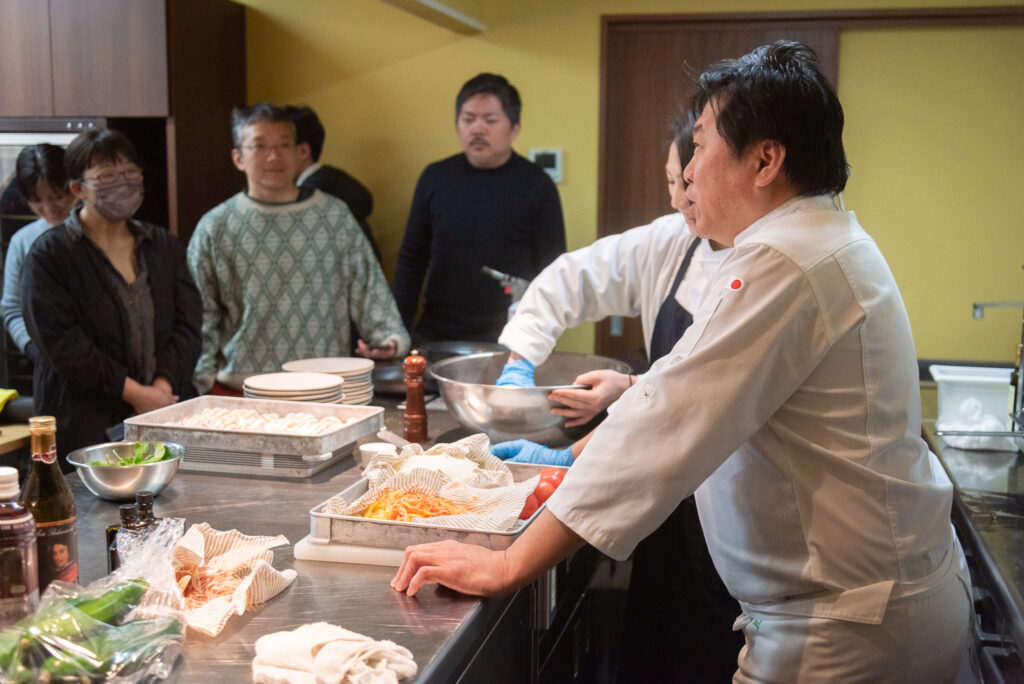
The two “Pescatarian” dishes, inspired by the snowy landscape of Mt. Gassan, include “Nodoguro Mousse,” which brings out the richness of the blackthroat seaperch, and “Kin Kara sea bream and Squid and Zucchini,” where the subtlety of the Kin Kara sea bream is brought out by browning it at 175 degrees Celsius. Chef Okuda emphasized the importance of condensing umami flavors specific to each ingredient, such as extracting fat effectively from nodoguro and browning the mild-flavored Kin Kara sea bream. He stated that chefs need to have a wide range of skills to achieve this. During the subsequent Q&A session, questions focused on topics unique to culinary training, such as oil and oven temperatures, and starch properties.
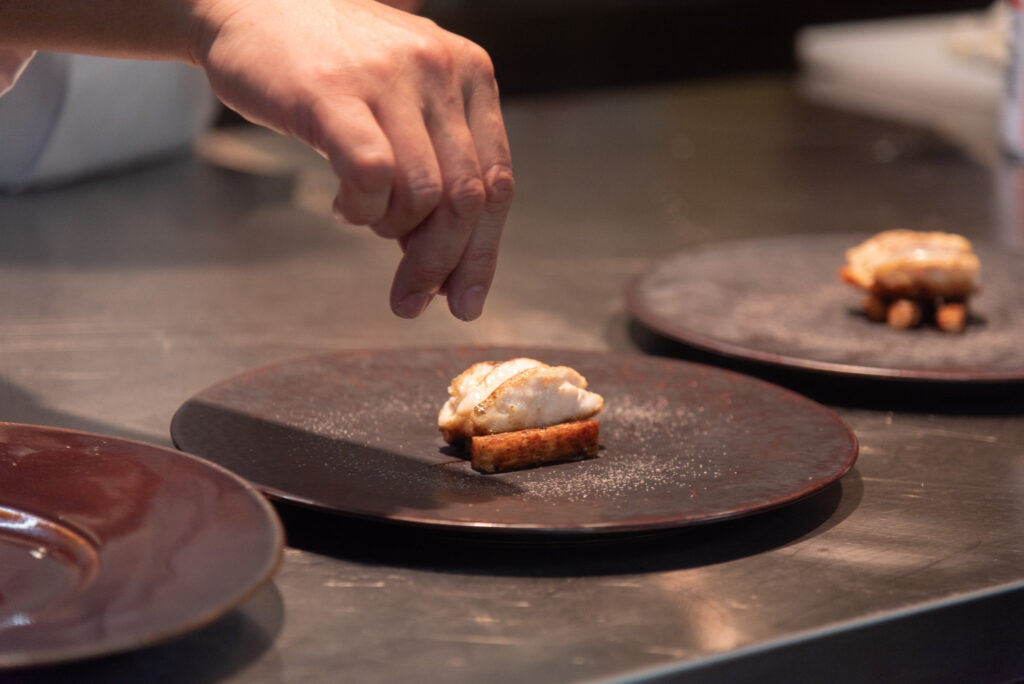
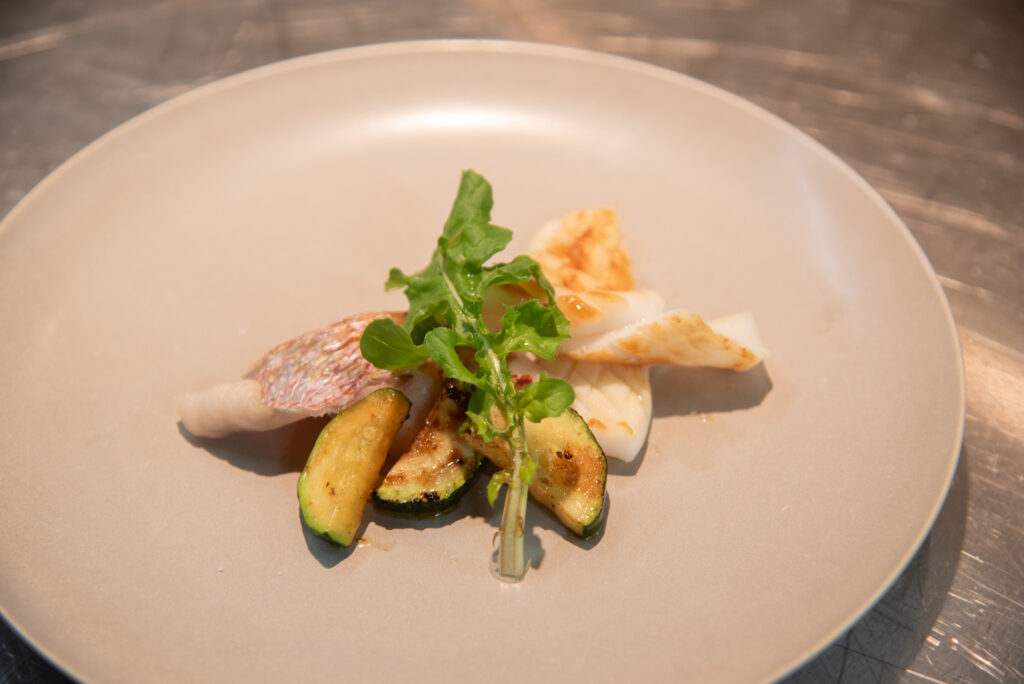
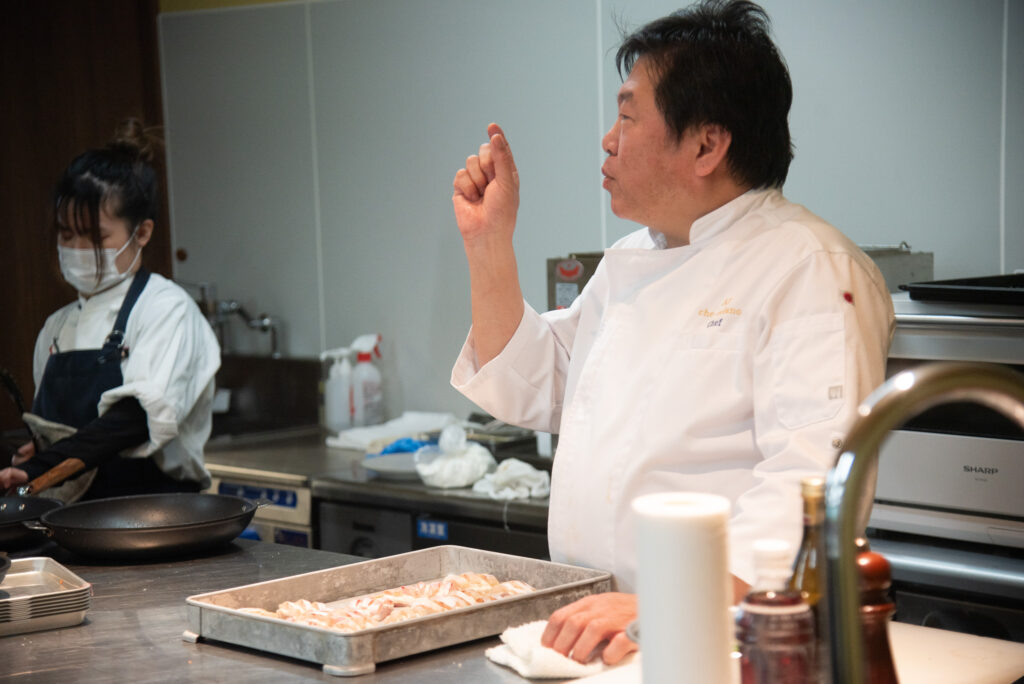
To prevent exhaustion on the ground: “Substitution”
In the second part, following a break, Higa started with an explanation of the connections between regions and food, titled “The First Step Towards Food Diversity.” Higa, who has been involved in producing local food as a tourism resource in various places across Japan, from restaurant buses in Kyoto Tango to old folk houses in Miyagi’s hot spring areas, as well as at Hakodate Airport and Lake Towada, remarked that even from his perspective, the richness of ingredients and the allure of food culture in Shonai are exceptional. However, not everyone in the food and hospitality industry can afford to engage with food diversity with ease. There are operational issues such as manpower and financial constraints.
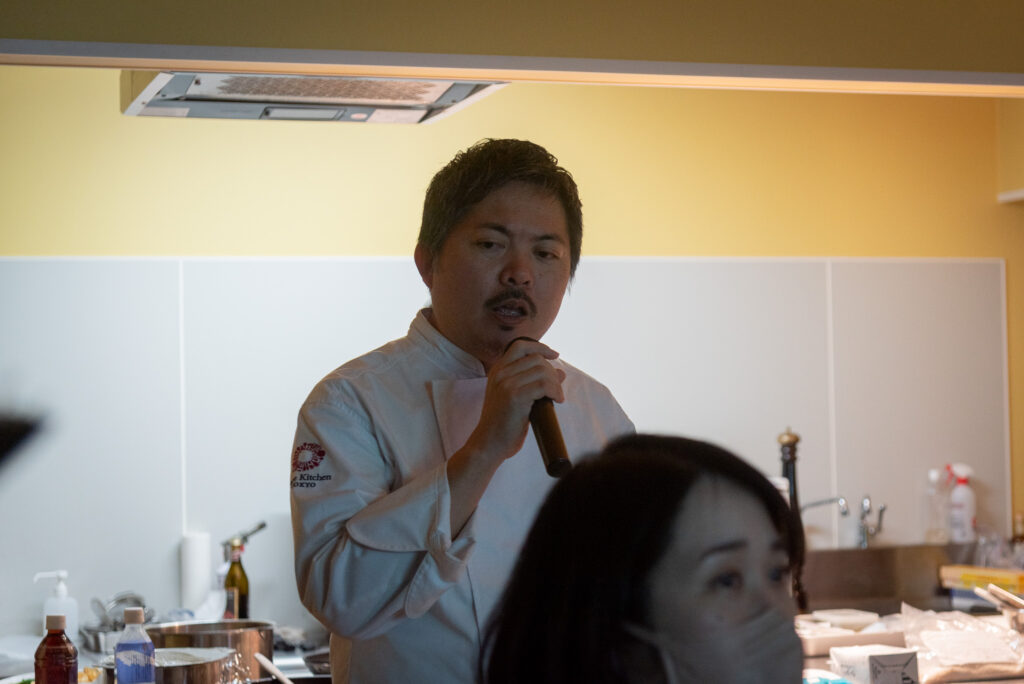
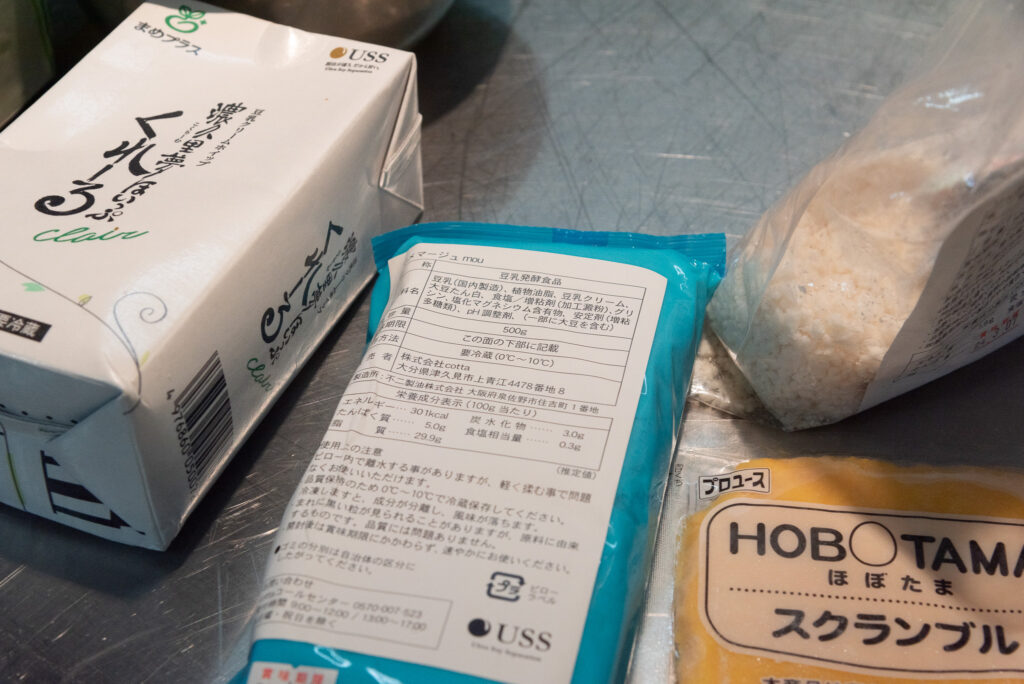
Therefore, Higa imparted strategies for overcoming these practical challenges. One of them is the concept of “substitution.” Instead of learning new dishes from scratch, it involves substituting existing or familiar dishes. For example, if there is a vegan customer in a group, even something as simple as vegetable tempura with soba noodles can be satisfying. The key is to pay attention to the bonito broth in the dipping sauce and the egg in the tempura batter. Additionally, dishes like hot pot or mixed rice can serve as main dishes. Higa also introduced the use of rapidly evolving alternative foods. Soy meat can replace meat, SOY scramble can replace eggs, and soy milk or coconut milk can replace dairy. Furthermore, desserts, which have been a concern in the past, now have fermented soy milk that resembles whipped cream, and there are pie crusts available without butter. By combining these ready-made products with Shonai’s strengths, such as vegetables and fruits, one can create sufficiently attractive dishes.
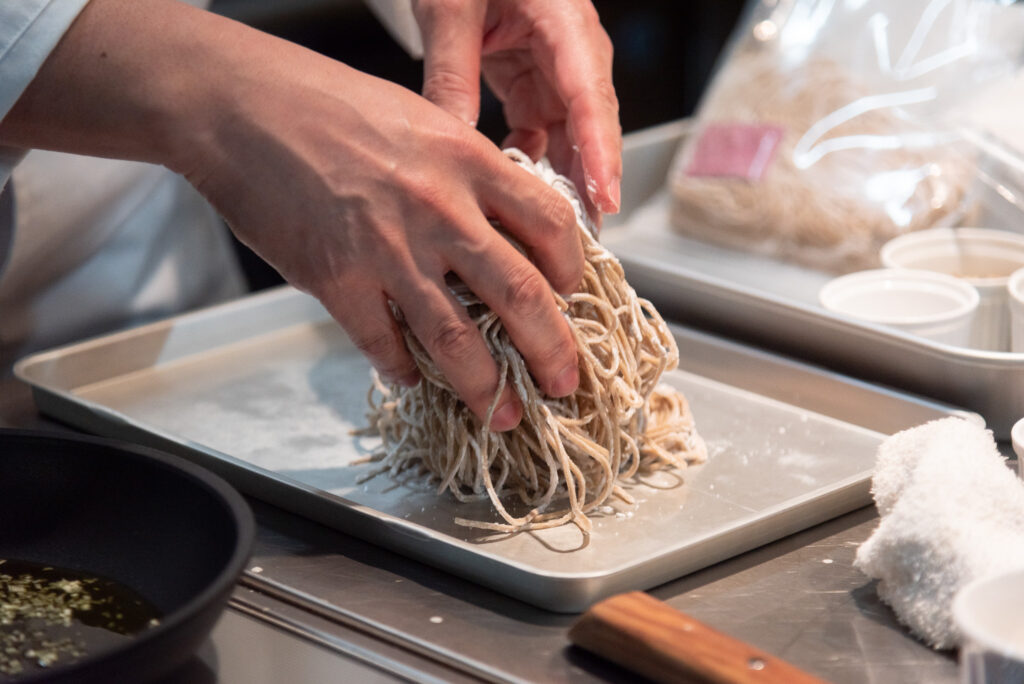
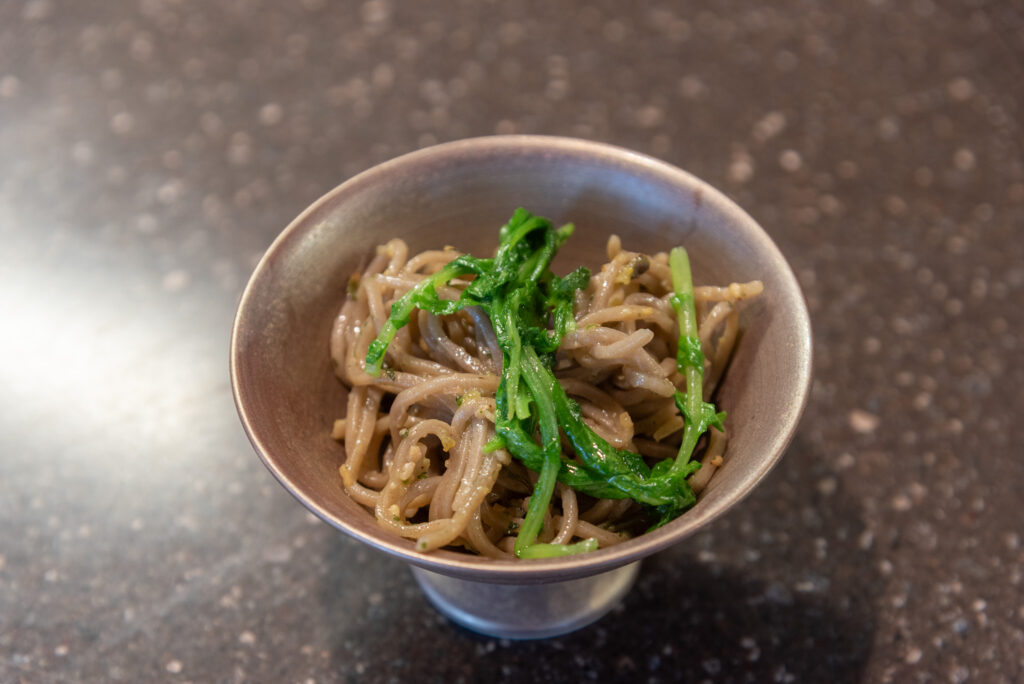
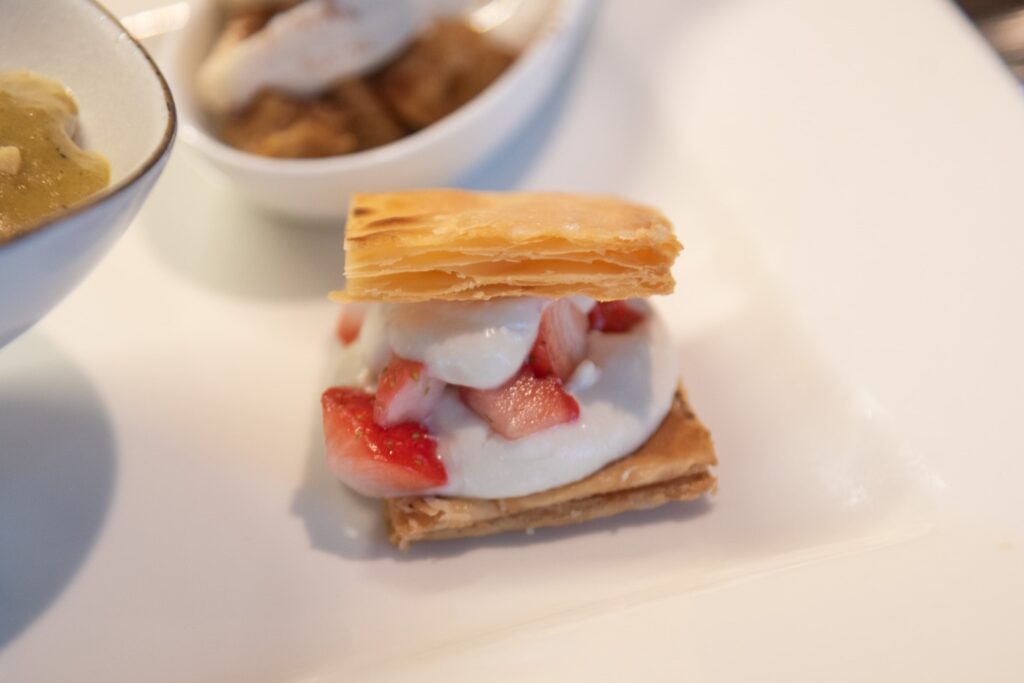
Higa then offered six dishes, including “Soy Taco and SOY Cheese Bruschetta,” “Veggie Scramble,” “Soba with Raw Seven Spice Peperoncino,” “Vegetable Rendang (Indonesian-style Curry),” “SOY Tiramisu,” and “SOY Mille-feuille.” Participants who tasted the dishes expressed surprise at their high quality. Finally, Higa stated that food diversity can be achieved through “stock,” “knowledge,” and “mindset,” emphasizing the importance of supporting this attitude throughout the city, which can resonate with inbound customers and lead to repeat visits. The participants seemed encouraged to take a step forward by the strong lectures from both speakers.
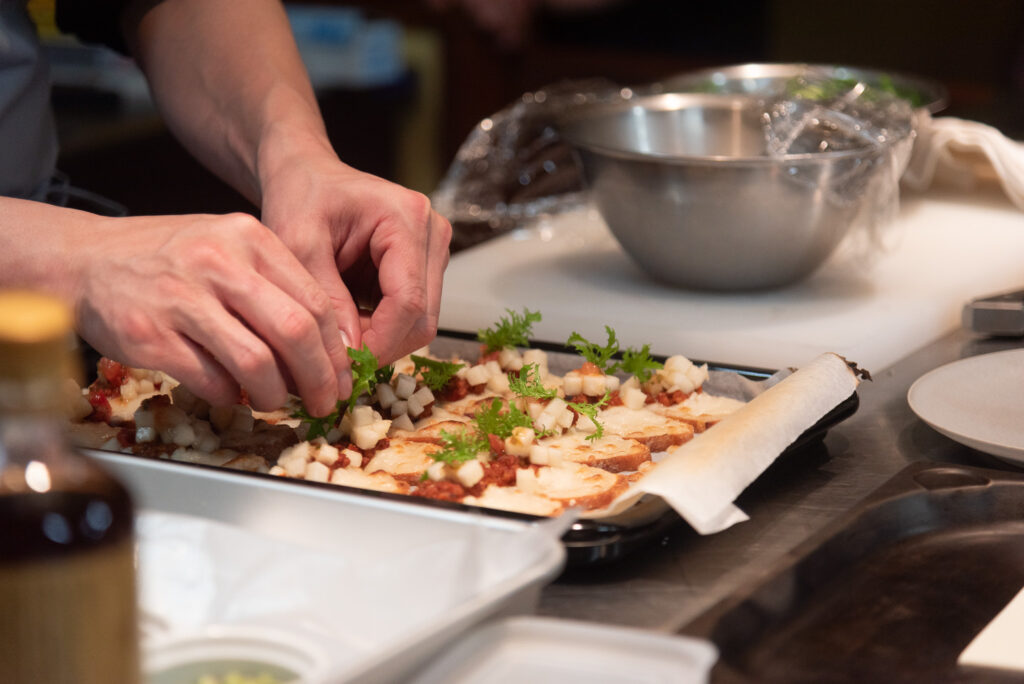
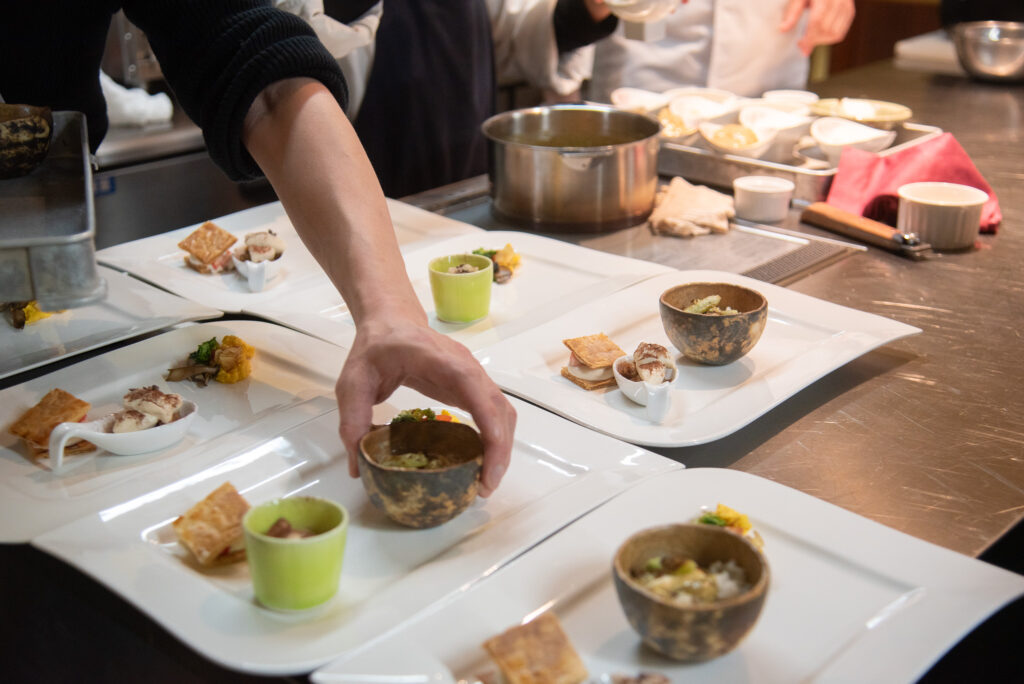
| Delicious Tsuruoka Gourmet Journey | https://www.tsuruokacity.com/lp/gastronomy-tourism/ |
